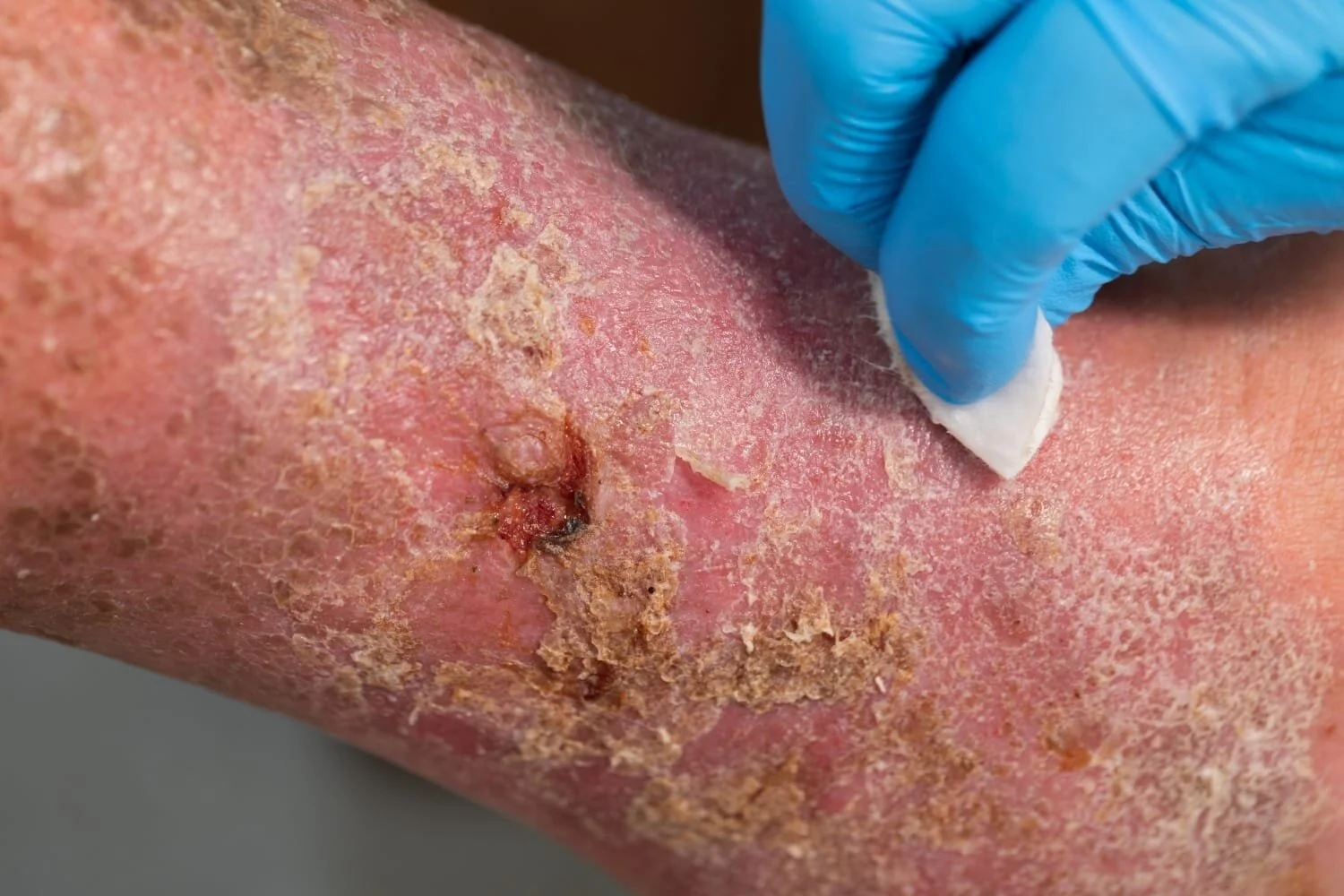Overview of venous leg ulcers
Venous leg ulcers are abrasions in the lower legs, typically near the ankles, caused by venous disease. The abrasions develop as small openings in the skin and create an environment for bacteria to settle. Leg ulcers form when these abrasions stop healing and get bigger.
Venous leg ulcers are also known as Stasis Ulcers due to the elevated venous pressure in the lower legs that cause “stasis” or congestion.
Dr. Leandro Perez shares valuable information about venous ulcers. This common, debilitating problems affect nearly 1 million Americans.
How do veins cause leg ulcers?
Venous disease is a common cause of leg ulcers. When the veins in your legs are dysfunctional, blood is inefficiently transported back to the heart. This causes blood to pool at the bottom of your legs, including your ankles and feet. This residual blood greatly increases the blood pressure of the affected areas, which eventually cause the tiny skin tears that progress to an ulcer.
One of the mechanisms by which venous disease can cause skin ulcerations is the presence of insufficient valves (leaky valves) within your leg veins; when your veins become dilated, these valves prevent the normal flow of blood (from your legs to your heart) and blood accumulates in your lower leg.
Another important mechanism for venous leg ulcers is the presence of venous obstruction; this can be the result of a prior blood clot (from a DVT) within your leg veins or secondary to an external compression (such as the May-Thurner syndrome) of your pelvic veins.
Venous leg ulcer diagnosis
A detailed history of your presenting symptoms and a physical examination provide a clear diagnosis of the presence of an ulceration.
In order to describe the specific reason for the ulceration, a venous ultrasound is recommended to determine the mechanism of your ulceration.
In certain cases, a venogram with IVUS is necessary to evaluate your pelvic veins with precise anatomical detail.
Venous leg ulcer treatment
Leg ulcers are treated depending on the precise mechanism(s) that is(are) causing the ulcer. The overarching treatment principle is to reduce venous blood pressure by relieving any venous obstruction or by eliminating or sealing off the vein(s) that have pathologic reflux; these procedures in combination with careful wound care are associated with a high likelihood of successfully healing the ulcer.
Additional strategies include long-term, high-quality lower extremity compression and limb elevation.
To request a consultation click below or call (239) 300–0586


